In Africa’s southernmost tip lies the continent’s most diverse country. Here you can get close to the wildlife, experience magnificent scenery, indulge in sublime gastronomy and discover a rich cultural history. South Africa offered a cocktail of unique experiences when we combined safari in the Kruger National Park with a city break in Cape Town.
Written by Mette / Photo by Martin
The article has been published for Africa Safari
Translated from Danish
A roar of a lion suddenly penetrates the dense bush around our safari jeep and make my body jump from the seat. Arms and legs involuntarily in the air. The roar is surprisingly loud. But the animal is nowhere to be seen.
It is early in Kruger – South Africa’s largest and most famous national park. The low-hanging morning sun makes the savannah glow and throws a fine-grained web of shadows on the dry soil. Our surroundings are the optimal camouflage for a lion.
Another roar sounds.
This time much closer and the subsequent silence is deafening. “He knows we’re here,” tells our safari guide, Elsabe, with a muted voice as she slowly moves her hand from the wheel and down to the ignition key of the open jeep. Ready to turn on the engine. Ready to avoid a potentially dangerous situation or opposite to get closer if the lion turns up further down the road.
None of the parts prove necessary. Out of the bush The King of Animals strolls just a few meters from the jeep in a typically dull African pace. The tail swings playful and the yellow eyes gaze at us with the stoic tranquility of a dominant predator. The sight is fascinating and I instinctively hold my breath. The only thing that separates the approximately 200 kilo muscular guy and me is three short jumps and a canvas that forms the doors of the jeep.
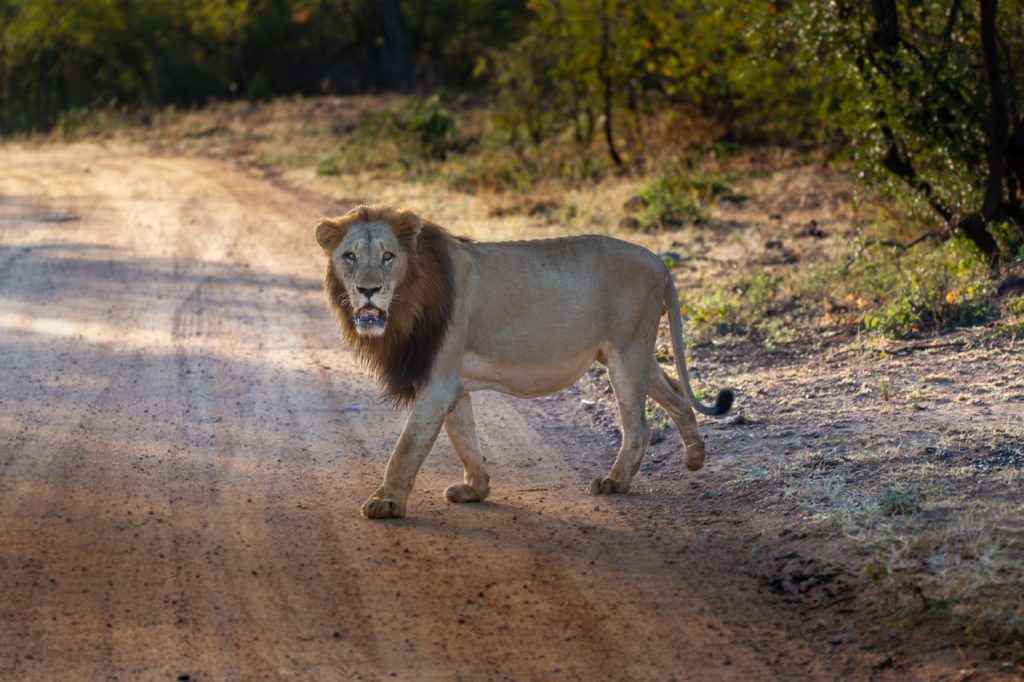
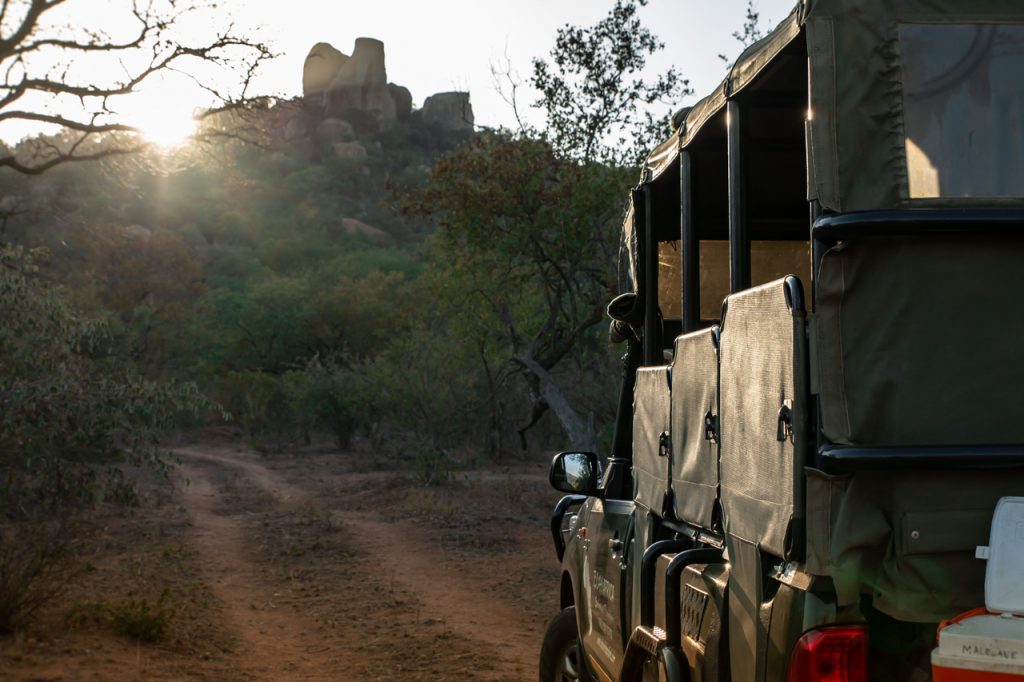
“The tongue of the lion is so rough that it can lick the meat directly of the bones on its prey,” Elsabe whispers and in the days to comes we will learn that she has an encyclopedic knowledge of wildlife. A knowledge that makes me feel safe – despite the curious look of the lion.
“Please buckle up and make sure your seat is in the full upright position,” she announces with a big smile as the lion has promenaded further in to the bush “and enjoy the ride”.
On animal territory
Kruger National Park is located in the northeastern corner of South Africa. Here it trails the border of Zimbabwe in the north, Mozambique to the east and the river with the signatory name, Crocodile River, to the south. It is also from here that the safari of today has started. We live at Pestana Kruger Lodge. A stylish hotel with a unique location on a riverbank where the animals come to drink. The view is enchanting and constantly changing. Our balcony is literally a 24-hour open natural Zoo.
The harsh beauty of Kruger is breathtaking. And as we drive further into the park the landscape changes. From a wild terrain that is closely developed with thorn bushes and umbrella acacia trees. To deep valleys with dry rivers, tall eucalyptus trees and lurching mountains on the horizon.
Dressed in fur and armor – designed for survival in the merciless nature – the animals are well camouflaged in this landscape. As we eagerly scout for the animals it quickly becomes a sport to be the first one to spot the various animals: Was that branch the horn of a kudu? Was that a leopard tail hanging from a tree? Is that a stone in the water or the back of a hippo? A wildebeest hiding behind the thicket? Or was it a waterbuck?
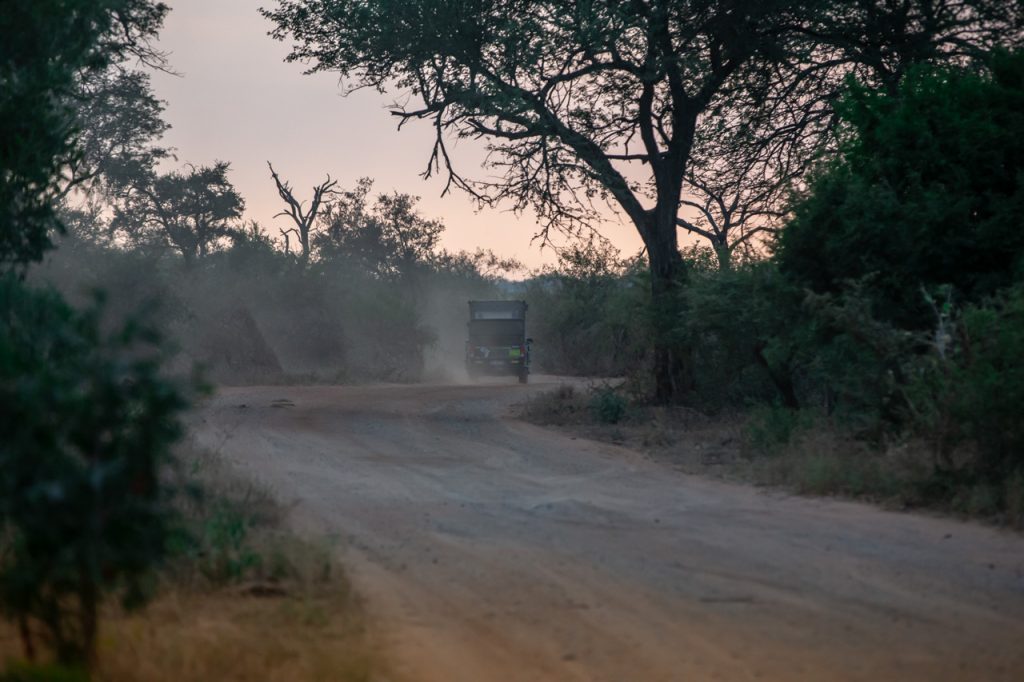
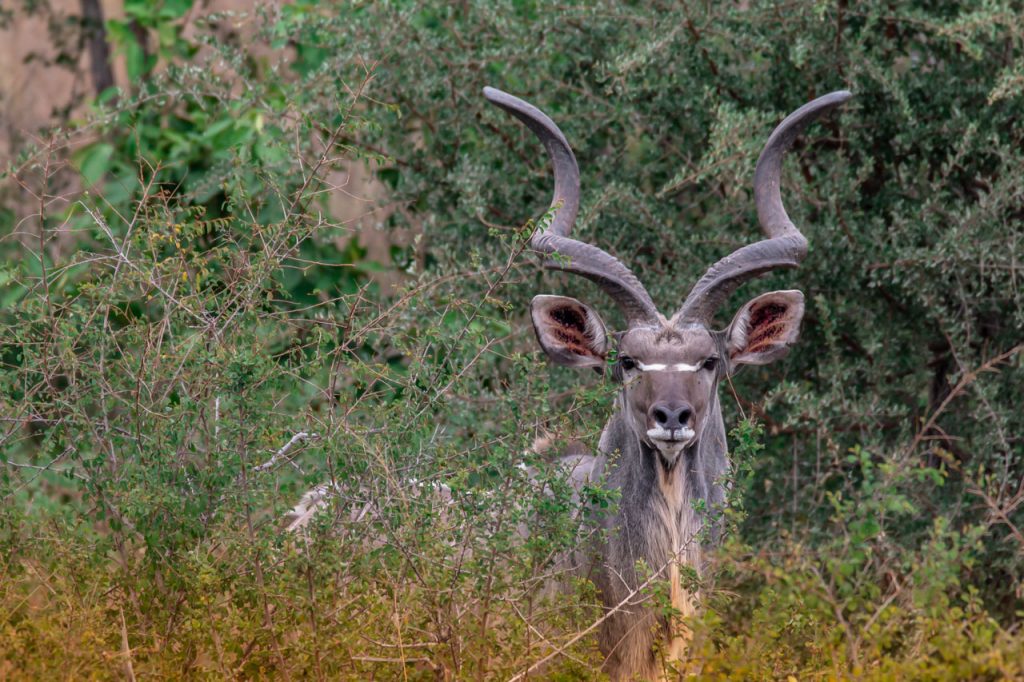
Safari par excellence
When you’re on a safari in Kruger you must be prepared to experience the unexpected. With an unusually large number of Africa’s biggest celebrities you do not have to look long before the animals appear. There are more than 12,000 elephants, 5,000 rhinos, 2,500 buffalos, 1,500 lions and 1,000 leopards – and again and again we are startled by how close to the animals we actually come.
A giraffe reveal his head from the top of a bush to challenge us in what resembles a stare competition. Two rhinos are standing only a few meters from the road. Close enough to hear them chewing grass. And a female lion is munching on a warthog close enough for us to see the bloody bones. The elephants march past us at the distance of their trunks, while the zebras casually hang out as if we were their friends. And everywhere we meet large flocks of impala, also known as ‘McDonald’s’. Whether the franchise reference originate from the iconic ‘M’ mark on the reddish brown part of the animal or from the concept of ‘fast food’ for predators, Elsabe does not know.
“I do not speak impala,” she answers with a smile and I wonder if she will add my question to the list of ‘funniest questions of safari guests’: Does giraffes hunt as a pack? How does the elephant catch its prey? Can you drive in way so the animals are primarily on the right side of the jeep?
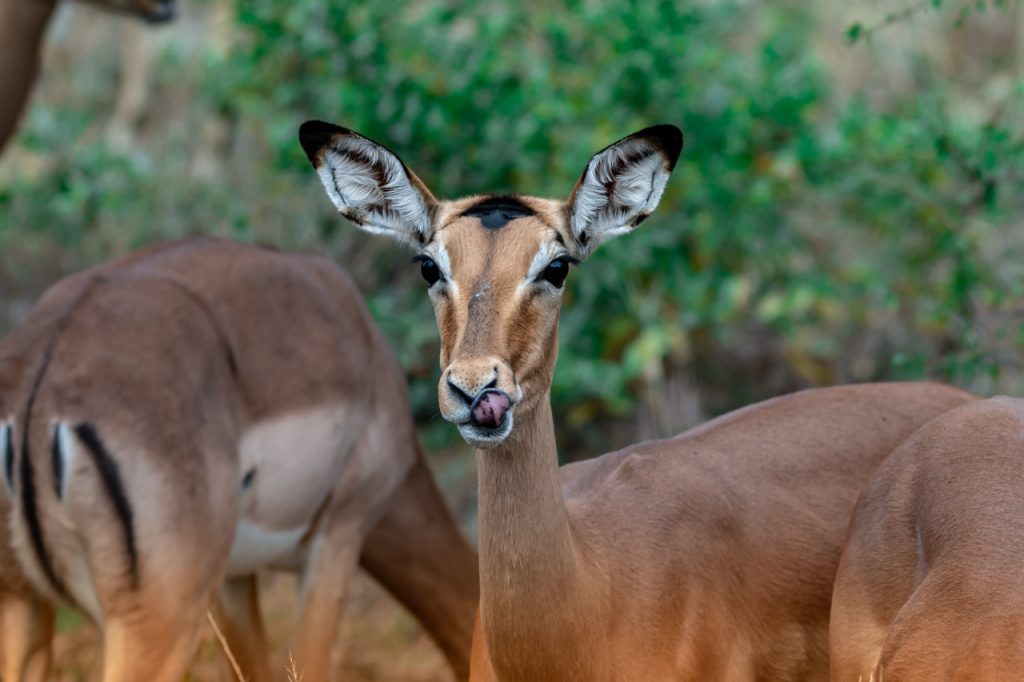
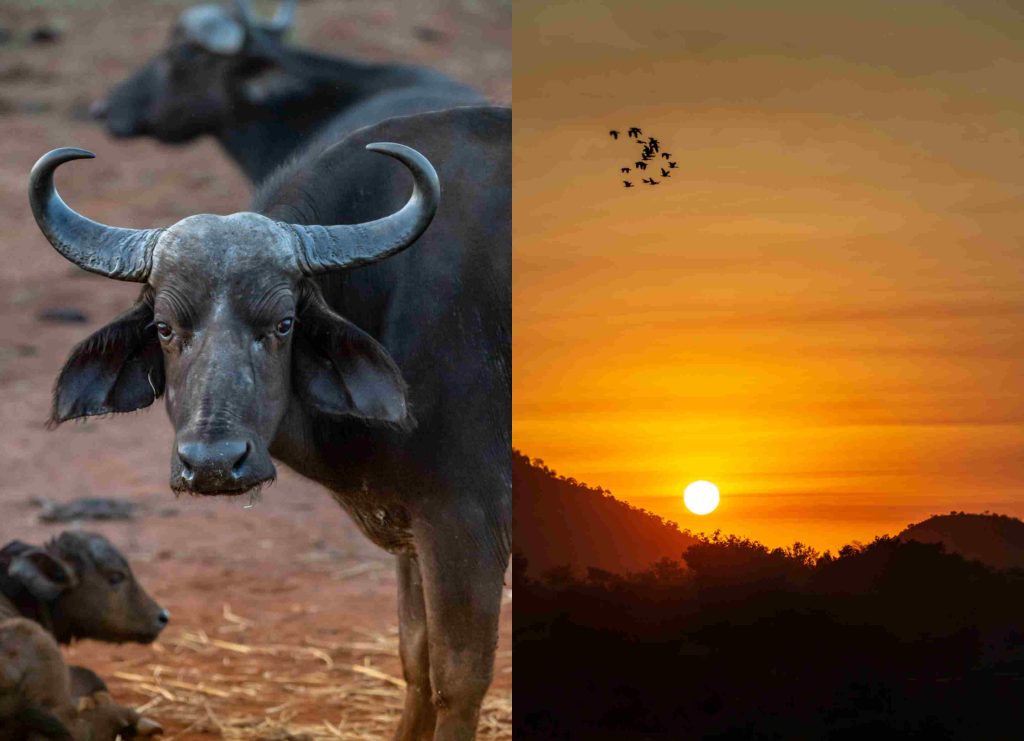
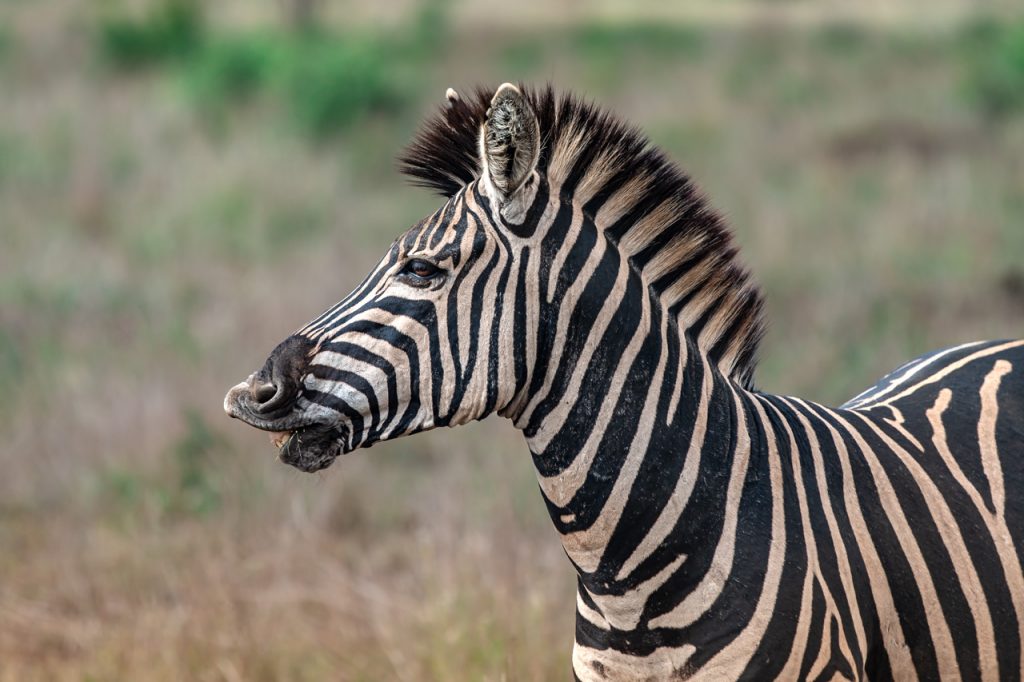
On the back of a dragon
Three days later we have a full plate in Safari Bingo (The Big Five containing the elephant, the rhino, the buffalo, the lion, and the leopard) and head towards the Drakens Mountains.
The drive runs through a flat and lush landscape with orchards, sugar cane fields, charming villages and evergreen forests. But as we reach the majestic mountain range it changes dramatically. The trip now runs in thinner air through hilly lawns and past deep gorges where dark blue creeks fall as a roaring waterfall between the vertical walls of rock.
In the window I can see my own gazing face swallowing the landscape as if I was passing scenes from an adventure by Tolkien. The Drakens Mountains are South Africa’s tallest and longest mountain range and the rocky giant got its name because the settlers felt that the ridge looked like the back of a dragon. The highest point is almost 3,500 meters and is located in the small kingdom of Lesotho. The only state in the world whose entire area is more than 1,000 meters above the sea level. It is not hard to understand why the mountain range is on the UNESCO World Heritage List.
We continue on a route called ‘Panoramic Route’ where you pass by some of the most spectacular places. One of our favorite stops is the viewpoint of ‘The Three Rondawels’. Created thousands of years ago three round rocks shaped like the traditional thatched cottage (a ‘rondawel’) stands and thrones on top of a mountain. And between the rocks and us a moving sight to one of the world’s greatest gorges unfolds. Down in the abyss Blyde River Canyon flows and just a single step too far to the edge would mean a vertical drop of several hundred meters. Rarely has the cliché of feeling small in nature made more sense than here.
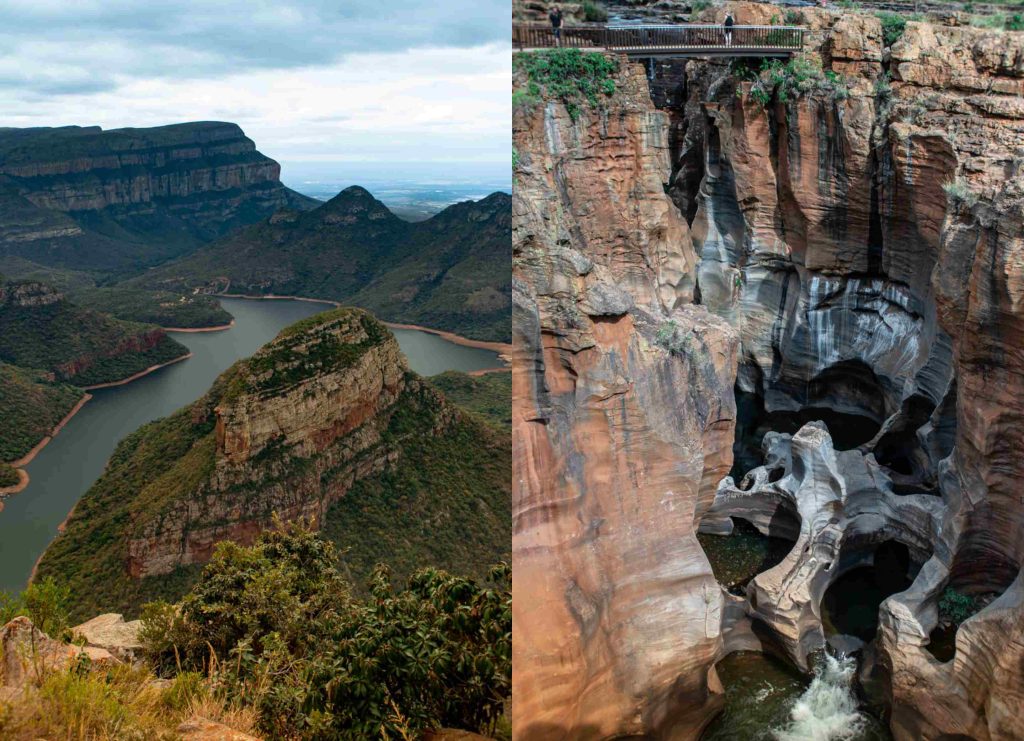
Seduced by beautiful Cape Town
The clouds roll over the flat coastline like soft white cotton and momentarily hide the view of our final destination. We have arrived in Cape Town and followed by a couple of minutes of cable car tour we are standing at the top of the 1,086 meter high table mountain. The famous landmark of the city and one of the seven wonders of the world.
From the flat shadowless mountaintop the entire of Cape Town city is at our feet. Flanked by a green rolling mountain landscape on the one hand and the mighty Atlantic Ocean, which bustles towards beautiful beaches, on the other hand. South Africa’s oldest city has a spectacular location. And if we squeeze our eyes together we can see the southern Cape Point on the horizon. A cliff with a historic lighthouse, which has not had great luck navigating seafarers through the treacherous waters. The view is overwhelming and I have to tighten my grip around my camera to counteract my instinctive feeling of spreading my arms and pull of an alternative version of the scene from the movie Titanic.
With both feet back on the street we start exploring the multicultural metropolis, which is a marvelous mix of the old and new world. The beautiful Victorian and Georgian buildings remind us of the century-old colonial history of the city which strongly contrast with its modern, polished skyscrapers.
But it is not just the architecture that reflects the city as a pulsating melting pot. Surrounded by lush vineyards, Cape Town has flourished in recent years as a culinary haven where chefs mix African produce with international cuisines. In other words, the city is a seductive Don Juan to all with a passion for sublime gastronomy and wonderful wines. Oh, Cape Town, mon amour!
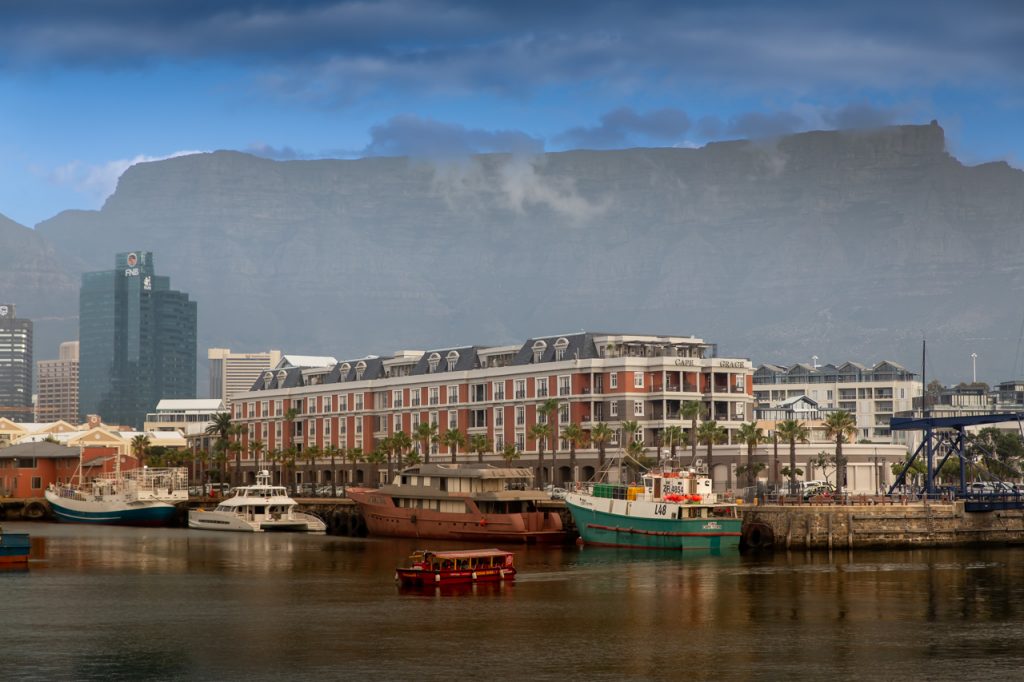
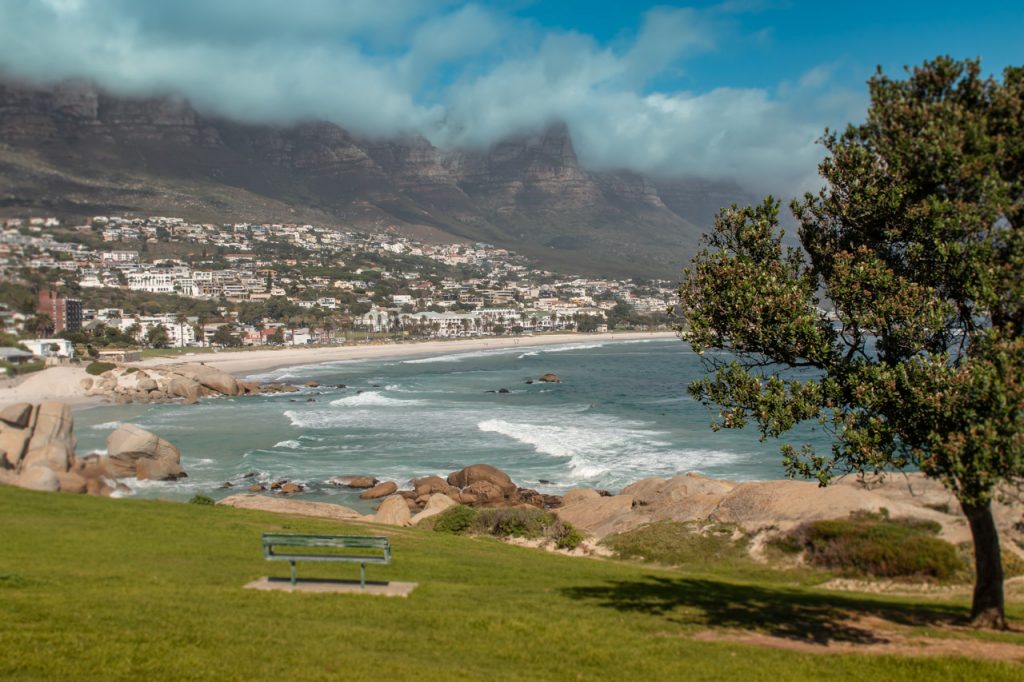
Greeting the great white
The following day we sail early in the morning from the coast at Gaansbaai Habour, which is located a couple of hours drive east of Cape Town. The plan is that we dress up in wet suits and diving masks and jump into the water to meet one of the world’s most scary animals: The Great White Shark.
After half an hour of cruising the captain turns off the engine and helps the crew to hoist a big cage into the water while a young guy starts pouring fish guts into the water. The smell is nauseous but apparently enchanting if you are a Great White.
“Down, down, down,” the guide eagerly shouts at me from the boat. I am splashing in the water surface, not far from a large tuna head, which he has thrown down to lure the toothy predators up from the depths and close to the cage. I’m trying to catch my breath, pushing hard against the top bars and shooting my entire body under the ice-cold water. Bubbles, foam, and ocean crumbs are blurring my eyesight and the change of sound is significant. It’s dead silent under water. Only my pulse pounds loudly.
I turn my head from side to side as I sense a big shadow. With a slanting soft motion, it slides closer and now the contour of a four-meter-long great white shark emerges. Conflicting my expectations, the slow and gliding pace seems both calming and hypnotic. And suddenly the huge animal is so close that I just have to reach out to touch it. But I hold my hands tightly squeezed on the metal bars. It’s not today I’m going to lose a hand.
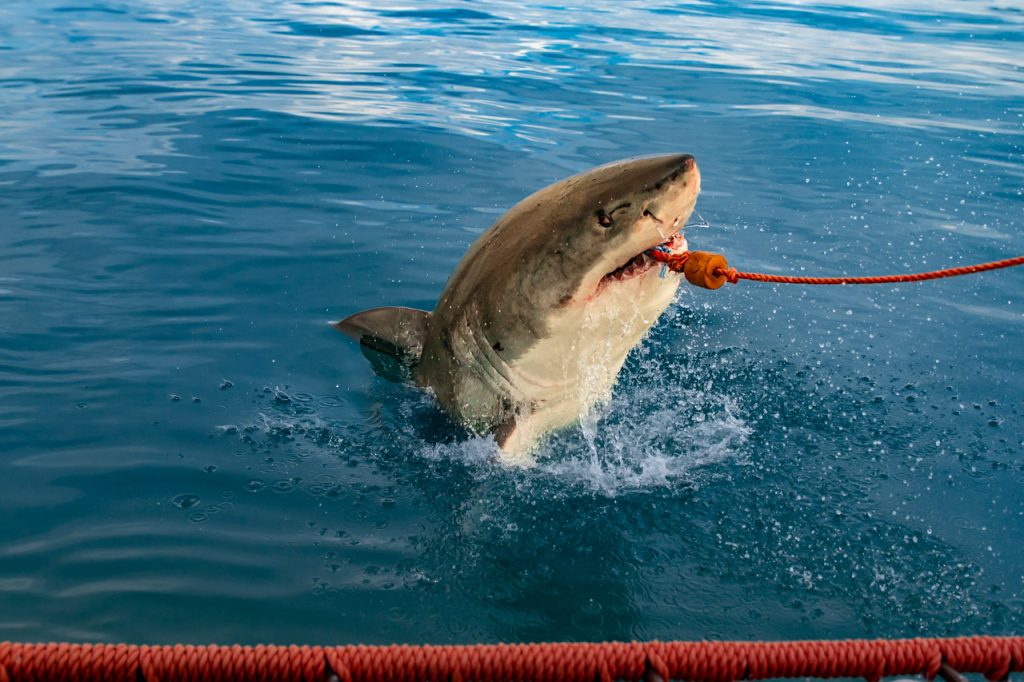
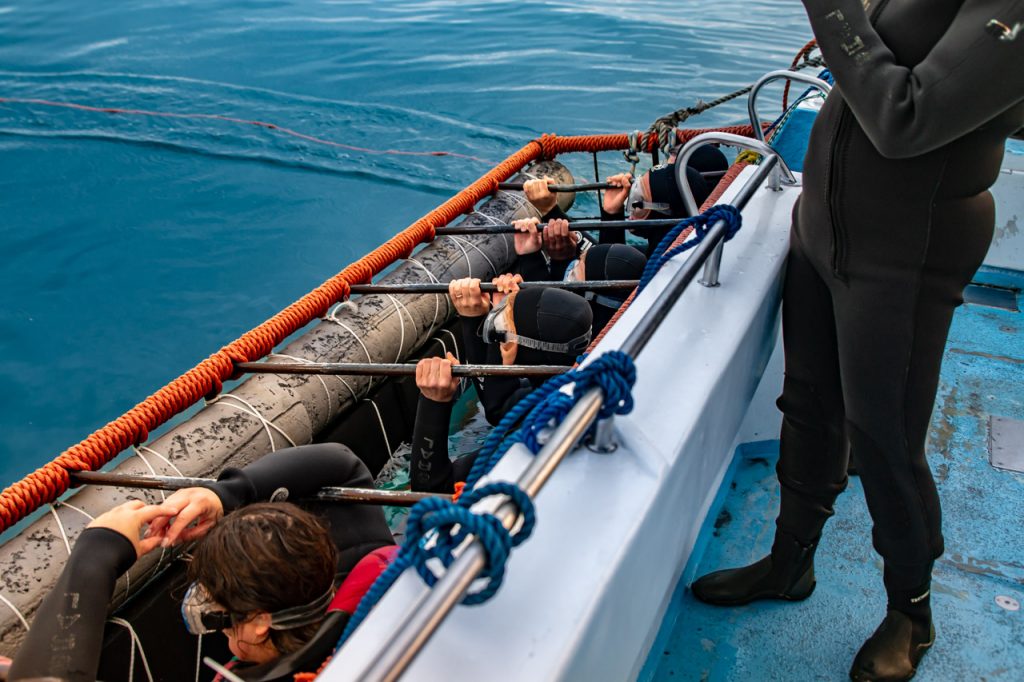
The Alcatraz of South Africa
I’m still high on a strange blend of honorary fear, horror, enthusiasm, and great fascination as we embark on a new boat next morning. This time to dive into the dark past of South Africa. The boat trip brings us from Cape Town’s picturesque waterfront and beyond to Robben Island: the infamous prison island where Nelson Mandela was incarcerated for 18 years during the apartheid regime.
“Driven by freedom” a text reads on the bus waiting for us at the dock. We drive around the small, rough and rocky island. Here we pass the houses where prison officers lived with their families as well as the limestone quarry where the prisoners worked daily. And from the roaring coast we can see the Table Mountain on the horizon where Cape Town shines promisingly. Just 9 kilometers from the country.
At the entrance to the prison a former prisoner receives us. On the basis of his personal story he tells about the buildings, bringing the historical surroundings to life. He tells about the wing of political prisoners and the cell where Mandela was locked up. About the farm where the officers did everything in their power to make life worse for the inmates. And about the office where the prisoners were registered and all mail was read and censored.
Deeply moved from all the stories we end the trip as we pass the prison gate with the famous words: “We serve with pride”. The prison where people sacrificed their lives to the fight against the racist dictatorship is empty. Left is only a thoughtful testimony of one of the cruelest chapters in South Africa’s history.
In front of us we are now waiting for a completely different journey. We are going back to Denmark. In the baggage we have 13 days of events that have made a huge impression. Nevertheless, it seems that we have only experienced a fraction of South Africa’s impressive nature, culture and history. Fortunately, because that’s a great reason to come back.
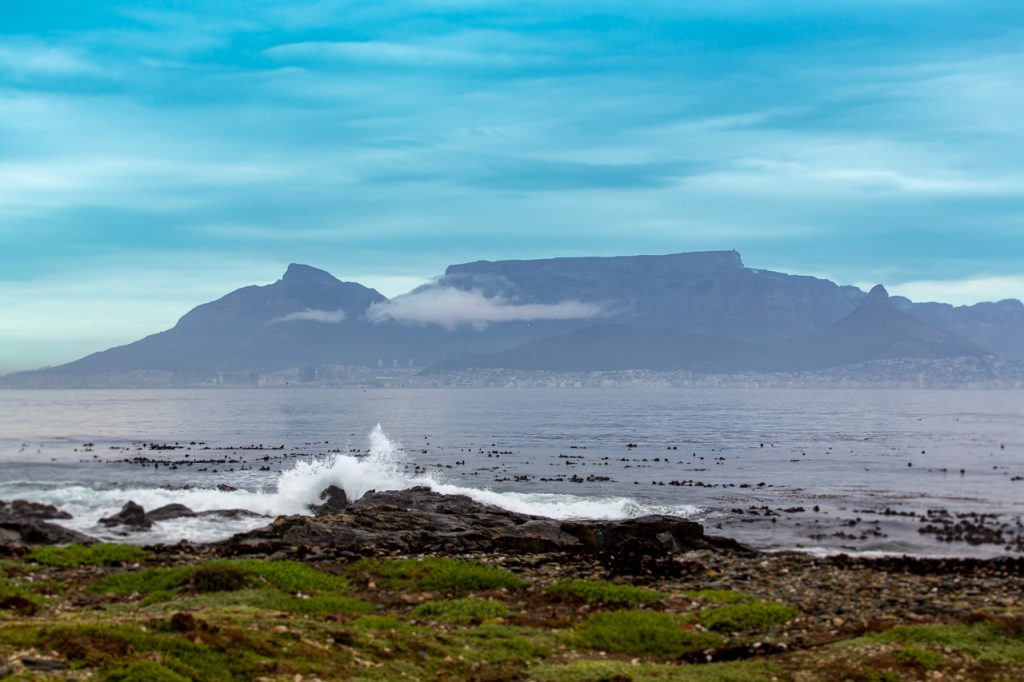
Fact about our journey to South Africa
The trip was arranged by Afrika-Safari.dk, who was very helpful with everything both before and during the trip. They organized the program and booked all our tours. We traveled in May 2016 where we started with 6 nights at Kruger National Park at Pestana Kruger Lodge and then 4 nights in Cape Town at Hotel Cape Manor. We flew via London to Johannesburg and home by the same route with a flight from Cape Town to Johannesburg.

